This week at its Worldwide Developer Conference, Apple presented a series of lunchtime presentations from speakers who each shared their story of overcoming seemingly impossible obstacles through the application of technology and their own persistent determination.
Breaking boundaries to contribute to a diverse meritocracy of ideas
On Tuesday, Dr. Christine Darden, one of the women featured in the book "Hidden Figures," described her experiences growing up in Monroe, AL, in the deeply segregated South of the 1950s.
She discovered a love for and proficiency in mathematics, but faced multiple obstacles— both as an African American and as a woman— that forced her to strive to build her skills, achieve an education and prove her abilities in an environment fiercely tilted against her.
Dr. Darden laid out the history of NASA, which originated over 100 years ago as the United States' National Advisory Committee for Aeronautics, initially a response to the embarrassing fact that despite being the birthplace of modern airplanes, America had failed to effectively capitalize on air power during the first World War in contrast to the English, French, Germans and Russians.
NACA was charged with driving advancement of air-related technology and design in the U.S., and enabled the country to later enter World War II with advanced technology in the field of aeronautics, followed by leading research in the development of supersonic aircraft after the war ended.
However, in 1957 the Soviet Union launched into the next frontier of space flight with the first artificial satellite, Sputnik. Dr. Darden noted how earth shattering this was in the midst of the Cold War and the threat of nuclear weapons. The U.S. responded by founding NASA the next year, which replaced the NACA and kicked off the space race.
Dr. Darden outlined that it was World War II that created the huge demand for mathematically-savvy research assistants, relaxing the societal barriers that had previously held back people both by their gender and race. In 1935, the NACA began hiring women to act as human "Computers" to help analyze data— initially using slide rules and later with stacks of punch cards fed into early calculating systems.
By 1941, demand for competent staff was so high that President Franklin Roosevelt issued Executive Order 8801, which banned "discrimination in the employment of workers in defense industries or government because of race, creed, color, or national origin," opening up new opportunities for all Americans.
However, black and white Computers at the NACA still remained segregated, expected to work in separate areas and coordinate their efforts at a distance.
By the time Dr. Darden arrived at NASA in 1967, segregation in the agency had been freshly peeled back to create a racially integrated— and more efficient and effective— workforce. Yet it was still deemed virtually unthinkable for a woman to be employed as an engineer, rather than just an assistant in crunching numbers.
In her presentation, she outlined her efforts to push for access to the same kind of training and advancement available to the men who shared her same background, experience and abilities.
She became one of the first females to become an engineer at NASA, and went on to lead groundbreaking research in the area of minimizing sonic booms created by supersonic aircraft. She also become the first African American woman in senior management at NASA's Langley Research Center, the original home of the NACA.
While the U.S. fell behind Europe in the commercial development of supersonic aircraft— as sonic boom panic created laws that banned flights over the continental U.S.— Dr. Darden continues to advocate for advanced research into minimized sonic boom aircraft designs and the rethinking of supersonic flight bans.
She noted federal appropriations earlier this year to finally fund the flight testing of boom-mitigating supersonic fuselage designs she worked on in wind tunnel testing at Langley.
Dr. Darden's presentation underscored the importance of following your passion and refusing to be held back by the way things have been in the past by working to create a new future.
Freedom and independence for every mind
On Wednesday, Todd Stabelfeldt gave his story as a man living with permanent disability ever since a gun accident he suffered as an 8 year old boy left him paralyzed from the shoulders down.
Stabelfeldt described growing up with an interest in technology complicated by an inability to live independently, and facing the obstacle of frequently being seen as unable to participate in the workforce, despite having achieved a college degree at 17 before even officially getting a high school diploma.
It wasn't until he was given an opportunity to work— by a man who later admitted he'd hired him to take advantage of his disability in order to pay him significantly less money— that he really discovered what he really wanted to do.
On top of his quadriplegia, Stabelfeldt's life got a second blow when his first love was taken by an aggressive cancer. But despite brutal setbacks, he pushed forward. He learned to live with less when his disability benefits were cut when he began working, but pushed his employer to increase his wages, which he got.
And when he met Karen, he grabbed another chance at love that blossomed into a marriage. The couple were previously profiled in a feature on their use of enabling accessibility technologies, starting with Switch Control and extending in recent years to Siri and HomeKit accessories than enable him the freedom to control his own environment.
Stabelfeldt demonstrated how he can control his iPhone and his wheelchair using a joystick and buttons he can operate with his face, including spinning around to take a selfie with his wife and the rest of the audience in the background.
One of the primary points he made was the importance of developers making use of accessibility technologies and testing their apps— and updates— to make sure they work for the people who rely on them. He noted his initial excitement about speech technologies as they began emerging, and how disappointing it was to see that virtually all of them required users to touch a button to initiate a command— something he couldn't do.
As accessibility technologies have increased and expanded, Stabelfeldt has made it his life's work to ensure that Apple itself knew how important its accessibility technologies were, and then to work with other disabled users— whom he called his "Quad Squad," and which whom he regularly meets— to help as many people as possible find out about the empowering technologies that are now available to increase the independence and capabilities of individuals.
In his question and answer session, Stabelfeldt repeatedly drove home the importance of testing to make sure that accessibility efforts truly work for the users who need them, underscoring that "convenience for you is independence for me."
Performing on the corner of technology and the liberal arts
Earlier today, Miral Kotb shared her story as a lover of dance as well as her interest in technology. She got started in both at an early age. After finishing college she began working in code development for Bloomberg. Following her passion for dance, she initially planned to pay off her school loans in her first year working at a conventional job, and then leave to pursue dance professionally.
However, those plans were sidelined when Kotb was diagnosed with cancer that required invasive surgery. The cancer then came back, requiring even more invasive radiation therapy that initially left her unable to walk. After years of physical therapy and strength training, she gained back her mobility but would never recover the ability to follow her dreams in a career dancing professionally.
However, she persisted, working on a concept to augment dancers with LED and illuminating El Wire, controlled wirelessly by computers running custom software. When Apple opened up the iOS App Store, she created an early app for controlling body-mounted lights.
Kotb described a series of complications she ran into, requiring custom hardware and innovative solutions to turn dancers into lit up artwork while they moved about the stage in near total darkness. In the course of a year, her team turned her concept into a functioning system that was set to debut on stage, only to be canceled at the last minute because the production would not allow the performance to occur in the darkness required to make it work as an act.
Despite that disappointment, she persisted, resulting in her first big break on BET, where the lighting system gained new recognition. After an appearance on "America's Got Talent," where her dancers ended up as a finalist act, she decided to follow her dream of performing on her own Off-Broadway show in New York City.
Kotb and her team of dancers performed twice on stage at WWDC, both before and after her comments, followed by a question and answer session regarding her own experiences, her team of dancers and the iLUMINATE act she created. Kotb is currently working on building the technology into a product others can use in their own performances.
All three lunchtime sessions were greeted by large crowds of attendees, and all three speakers were met with standing ovations from their audiences.
 Daniel Eran Dilger
Daniel Eran Dilger
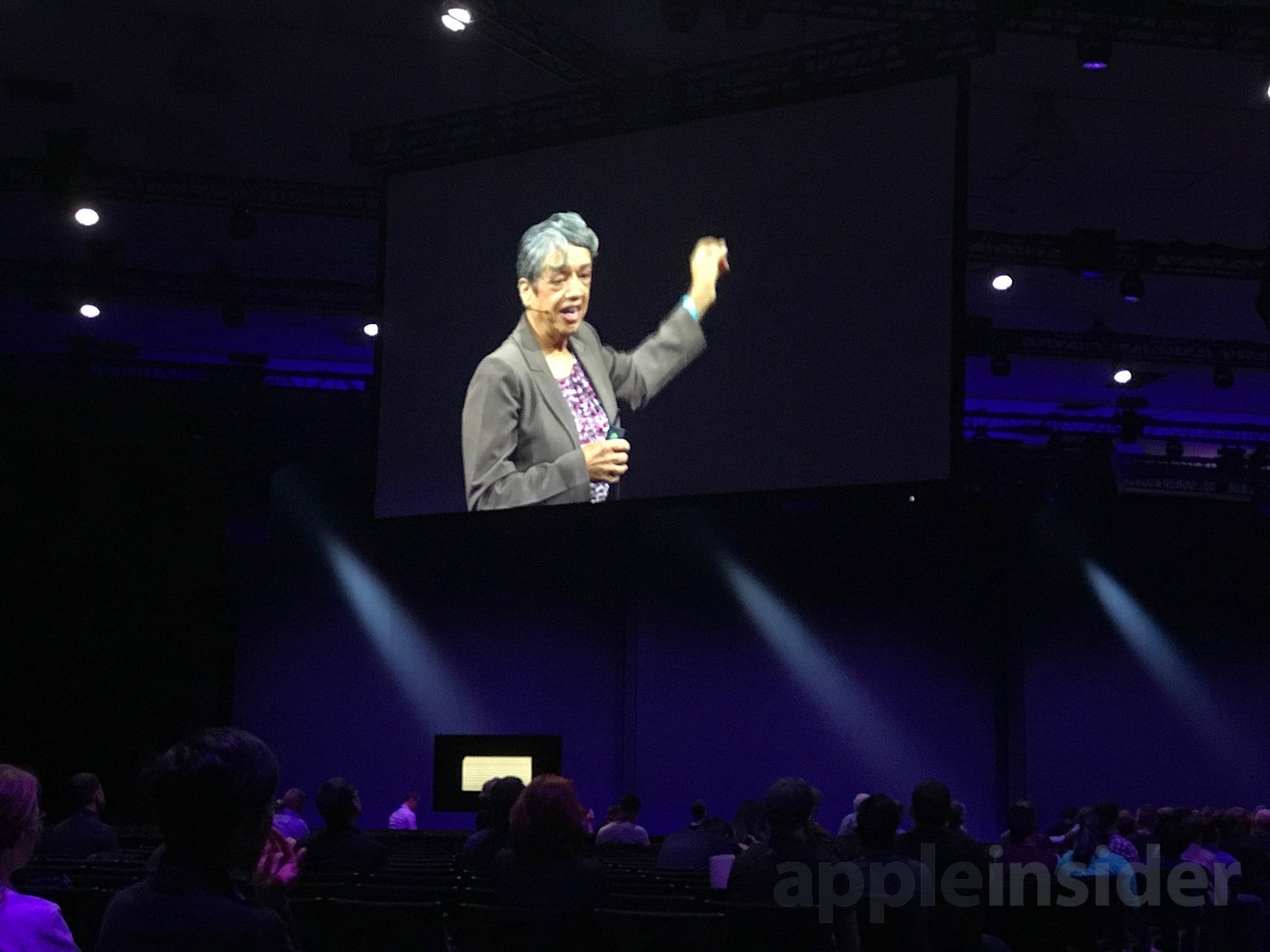
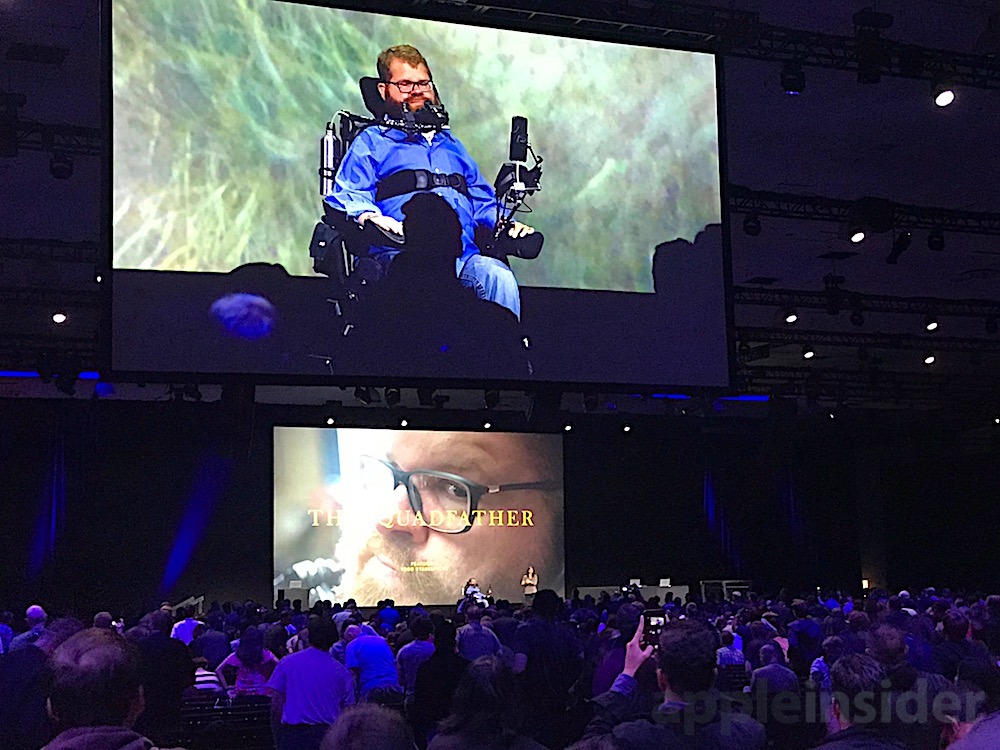
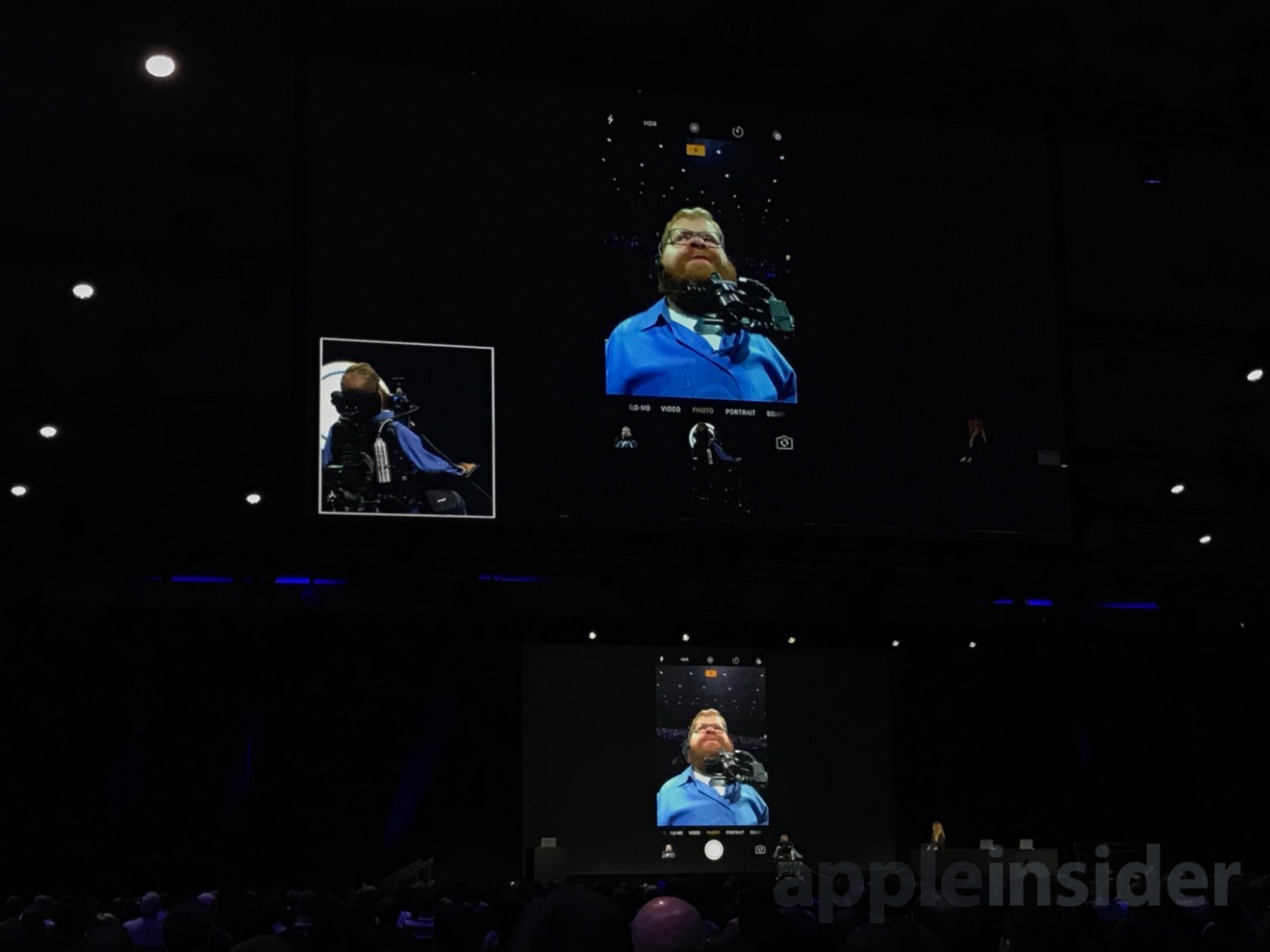
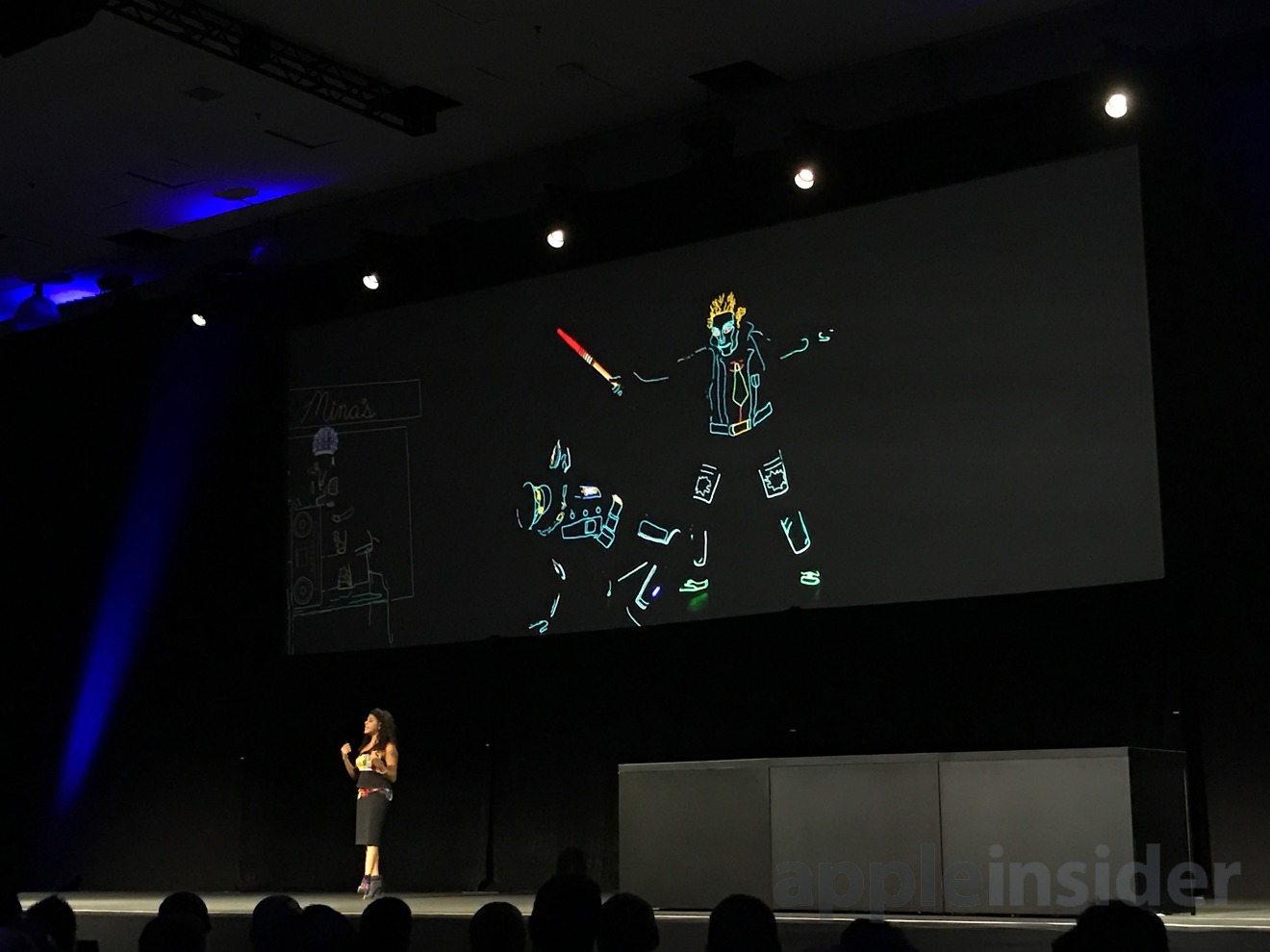
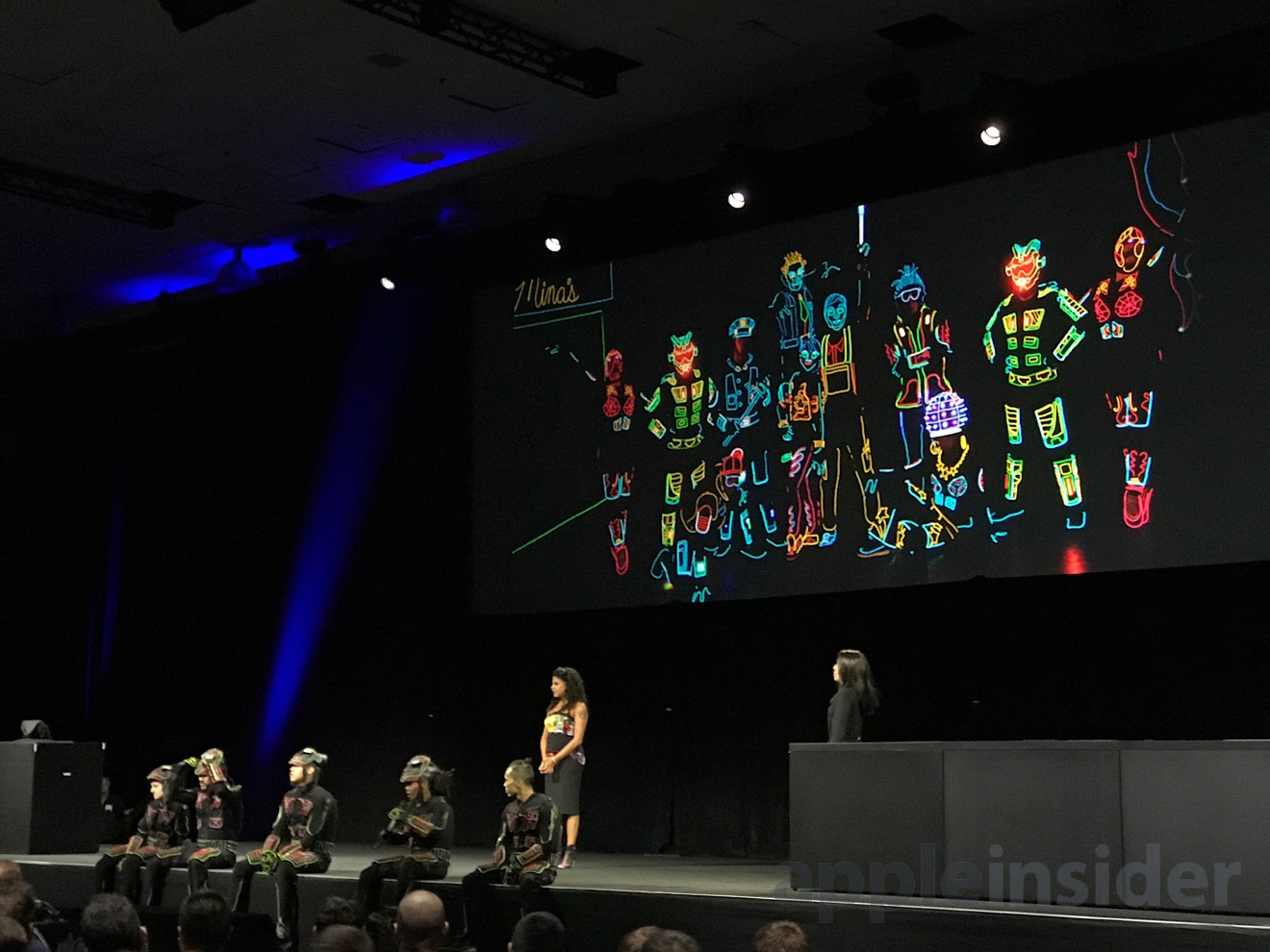







-m.jpg)






 Christine McKee
Christine McKee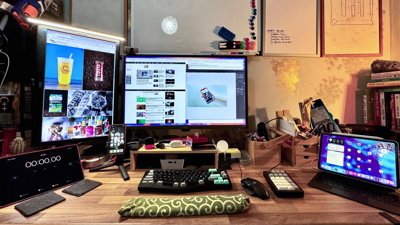
 Malcolm Owen
Malcolm Owen

 Sponsored Content
Sponsored Content

 Amber Neely
Amber Neely











8 Comments
Great article, Dan!
Apple is only getting better!
Awesome article! Very inspirational!
Lovely stories. It's really great that Apple had these sessions.
Thanks, one of the best articles l have read in a long time.
Is Kotb related to the formerly respected journalist/now day-drinking spewer of drivel Hoda?